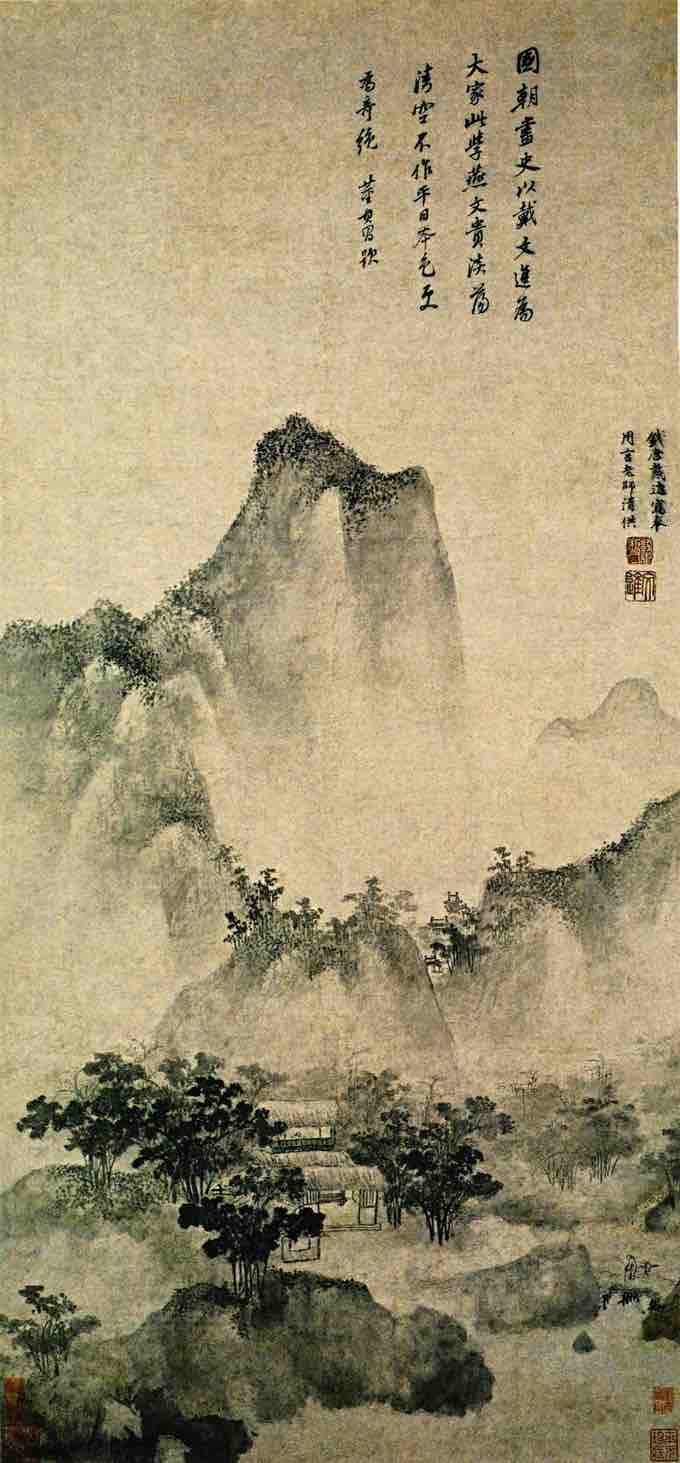Background: The Ming Dynasty
Under the Yuan Dynasty (1279–1368), painters had practiced with relative freedom, cultivating a more "individualist" and innovative approach to art that deviated noticeably from the more superficial style of the Song masters who preceded them. However, at the outset of the Ming Dynasty (1368–1644), the Hongwu emperor (1368–1398) decided to import the existing master painters to his court in Nanjing, where he had the ability to cultivate their styles to conform to the paintings of the Song masters. Hongwu was notorious for his attempts to marginalize and persecute the scholar class, and this was seen as an attempt to banish the gentry's influence from the arts.
The dominant style of the Ming court painters was called the Zhe School. However, following the ascension of the Yongle emperor (1403–1424), the capital was moved from Nanjing to Beijing, putting a large distance between imperial influence and the city of Suzhou. These new conditions led to the rise of the Wu School of painting, a somewhat subversive style that revived the ideal of the inspired scholar-painters in Ming China.
Painting Styles
During the Ming Dynasty, Chinese painting developed greatly from the achievements of the earlier Song Dynasty and Yuan Dynasty. The painting techniques that were invented and developed before the Ming period became classical during this period. More colors were used in painting during the Ming Dynasty; seal brown, for example, became much more widely used, and sometimes even over-used. Many new painting skills and techniques were innovated and developed, and calligraphy was much more closely and perfectly combined with the art of painting. Chinese painting reached another climax in the mid- to late-Ming Dynasty, when many new schools were born and many outstanding masters emerged.

Landscape in the Style of Yan Wengui by Dai Jin, hanging scroll, ink on paper (Early Ming Dynasty)
Painting techniques that were invented and developed before the Ming period became classical during this period. This Chinese landscape painting uses the "atmospheric perspective" to show recession in space.
Development
Early Ming Period (1368–1505)
The painting schools of the Yuan Dynasty still heavily influenced early Ming painting, but new schools of painting were also growing. In particular, the Zhe School and the Yuanti School were the dominant schools during the early Ming period. The painters of the Zhe School did not formulate a new distinctive style, preferring instead to further the style of the Southern Song and specializing in large and decorative paintings, most often of landscapes. The school was identified by a formal, academic, and conservative outlook. The Yuanti School was organized and supported by the Ming central government to serve the Ming royal court. Both of these new schools were heavily influenced by the traditions of both the Southern Song painting academy and the Yuan scholar-artists.
Middle Ming Period (1465–1566)
The classical Zhe School and Yuanti School began to decline during the mid-Ming period. Meanwhile, the Wu School (sometimes referred to as Wumen) became the most dominant school nationwide. Its formation is credited to painter Shen Zhou, who is known for using brushstrokes in the tradition of Yuan Dynasty masters. Suzhou, the activity center for Wu School painters, became the biggest center for Chinese painting during this period. The Wumen painters mainly inherited the Yuan scholar-artist style of painting and further developed this style into its peak. The painters Tang Yin, Wen Zhengming, Shen Zhou, and Qiu Ying were regarded as the "Four Masters" of the Ming period.
Often classified as Literati, scholars, or amateur painters (as opposed to professionals), members of the Wu School idealized the concepts of personalizing works and integrating the artists into the art. A Wu School painting is characterized by inscriptions describing the painting, the date, method, and/or reason for the work, which is usually seen as a vehicle for personal expression.
Late Ming Period (1567–1644)
The Songjiang School and Huating School were born and developed toward the end of the Ming Dynasty. The Songjiang School grew to rival the Wu School, particularly in generating new theories of painting. Both the Songjiang and Huating Schools formed the basis for the later Shanghai School in the late 19th century.